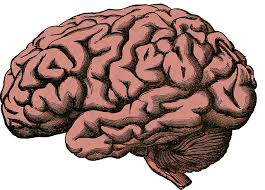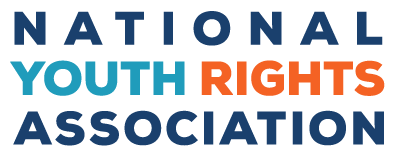Until very recently, I thought neuroscience had put up barriers to youth rights that no argument could cross. If the teenage brain is physically incapable of handling freedoms, then that’s the end of the discussion. It doesn’t matter how much we argue about the Constitution and equality under the law—no amount of arguing can make teenagers something they’re not. As believer in youth rights, I was of course disappointed, but disliking the truth doesn’t make it any less true.
 Still, I couldn’t quite let the matter rest. I kept reading articles, and my brain kept me awake, picking through the arguments over and over again on its own—almost against my will. And like applying steady, low heat to a block of ice, logic began to melt away all of our culture’s neuroscience-based conclusions about adolescence, and didn’t stop until nothing was left.
Still, I couldn’t quite let the matter rest. I kept reading articles, and my brain kept me awake, picking through the arguments over and over again on its own—almost against my will. And like applying steady, low heat to a block of ice, logic began to melt away all of our culture’s neuroscience-based conclusions about adolescence, and didn’t stop until nothing was left.
The problems with our conclusions about the teen brain can be divided into two major categories: error and subjectivity in the science itself, and double standards resulting from the way we use it.
1) Error and Subjectivity in the Science Itself
Scientists have a choice
When we ask a neuroscientist, “Why are you interested in the teen brain?” this isn’t a scientific question. It can never be a scientific process that determines which things experts choose to study, because science is nothing more than a tool for pursuing our personal and cultural values. There can be no science without a corresponding agenda.
Consequently, the mere fact that we study the teen brain more than other kinds of brains—for example, those of abusive parents or people with age biases—will mean that we discover things about it, and not about the others. This doesn’t mean there actually is more to discover—just that we care more. There are surely just as complex and unique brains in the world (since brains are every bit as complex and unique as human beings who own them) whose study we simply haven’t prioritized because we’re more interested in the teen brain. And that interest can only be due to our collective values, and therefore our collective prejudices—not to science.
Misinterpretation of findings
But given that the teen brain is no worse a subject of study than any other, let’s take it seriously. Researchers have found peculiarities in teen brains and behaviors. We’ve all heard about these a thousand times before (myelination, driving accident statistics, prefrontal cortex, etc.), so I won’t bother repeating them here.
Based on these observations, mainstream psychologists have developed the theory that the turmoil of adolescence is caused by a normal developmental stage of the brain during which it is hardwired by nature to cause erratic behavior.
But the fact is that this theory isn’t supported by any actual science. We may find such a flat denial tough to swallow—especially considering that all this talk of myelin and the prefrontal cortex sounds like a scientific explanation. But to see how unscientific it is, we can start by looking at the very same NIMH article that the NYRA Facebook page used as a paradigm example of teen-disempowering science. In one short paragraph, this article itself collapses the entire theory it tries to support: “While much is being learned about the teen brain, it is not yet possible to know to what extent a particular behavior or ability is the result of a feature of brain structure—or a change in brain structure. Changes in the brain take place in the context of many other factors, among them, inborn traits, personal history, family, friends, community, and culture.”
The wording of this paragraph makes it sound like an afterthought—most readers probably skate past it without thinking twice. But it is, in fact, a critically important admission of something mainstream neuroscientists never make sufficiently clear: science does not support their theory. No one has ever found convincing evidence (“it is not yet possible to” find convincing evidence) that teenagers are really caused to misbehave by a normal biological process, rather than by their environment—for example, by a culture that stunts them and keeps the brain in a state of extended childhood by treating teens like children no matter what they do).
To be sure, the language of this article—like the language of most teen brain articles written by actual scientists—is so scrupulously ambiguous, its writers can plausibly deny having ever supported the mainstream theory. They use phrases like, “adolescence brings with it” certain features, or say that their findings “might provide clues” or “seem to shed light on” this or that. They tiptoe around directly saying, “Irrational behavior in teenagers is natural,” because real scientists know full well that the evidence to make such a claim simply does not exist.
Now, we might say most neuroscientists are just reporting results, and it’s the fault of journalists and readers for getting the wrong idea. But we have to realize that even respectable neuroscientists have done nothing whatsoever to correct the misimpressions their writing has enabled, even though correcting misimpressions is their sacred duty as scientists. Surely, they have to be aware of how readers understand titles like, “Teen Brain: Still Under Construction.” It’s entirely within their power to correct these misimpressions—and yet they don’t. By doing and saying nothing, they enable bad scientists and journalists to put science’s stamp of approval on a claim that is in fact totally unscientific.
We should consider that if someone interested only in conveying the truth had been in charge of naming this article (rather than someone interested in giving misimpressions) it wouldn’t have been called “Teen Brain: Still Under Construction,” but “Teen Brain: Still A Mystery.” And if someone with a youth rights agenda had been in charge, it would have been called, “Myth of the Teen Brain Busted.”
Now that we have the confession of mainstream scientists themselves, we can move on to Dr. Robert Epstein and his book, Teen 2.0, which creates the very convincing alternative theory of a primarily nurture-induced adolescence. He finds that there are many communities and cultures all over the world (both today and in history) where irresponsible behaviors don’t spike during the teen years. In these communities, teens tend to be assimilated into the adult world shortly after puberty, and accordingly behave just like adults, almost as though adolescence did not exist at all. There are also “before and after” studies on isolated communities where large cultural changes (i.e. western influence) actually create teenage behaviors in places where they had been previously unknown. This heavily implicates nurture over nature.
As to the supposed universality of the “teen brain,” the above passage from the NIMH article admits that not a single neuroscientist has ever thoroughly looked into it. No one has ever tried to pick up an fMRI machine and carry it out to a culture where adolescence doesn’t exist, in order to verify that the teen brain is, in fact, universal. I have recently contacted Dr. Epstein, who still keeps tabs on this field. To this day, no one has ever conducted any such study, nor does it seem anyone is planning to. And Epstein is not the only one the only one to see the problems with this omission.
Finally, even The New Yorker, a magazine that has published its fair share of teen-bashing pseudoscience, paradoxically published another called Neuroscience Fiction, showing why today’s explanatory neuroscience is not sound: “The sort of short, simple explanations of complex brain functions that often make for good headlines rarely turn out to be true.” (Though of course The New Yorker, being only a publication, has also washed its hands of supporting the mainstream theory, as well as the expectation of coherence between the pieces it publishes.)
The fact that there is no clear evidence anywhere to implicate nature over nurture in the phenomenon of the teen brain (and many pieces of clear evidence pointing the other way) shows that our mainstream theory about a nature-induced irrationality during adolescence is supported by nothing more than speculation based on a correlation. This is not science.
Unscientific normative statements
Now, let’s assume that against all odds, the mainstream interpretation of the data turns out to be correct: let’s say teenagers do in fact have a significant natural predisposition to destructive behavior, independent of environment and culture. What of it? This mere fact in itself doesn’t “advocate” any particular policy change, since simple facts are incapable of “advocating” anything. For example, we also know that certain genetic and environmental factors predispose a person to alcoholism. Does this fact “advocate” making it illegal for people with this predisposition to buy alcohol? Absolutely not. Policy is still entirely up to us. If we decide that the benefits outweigh the drawbacks, then science—once it’s made its point—has no further power to overrule us.
Similarly, the mere fact that teens are hypothetically predisposed to irresponsible behavior does not tell us what to do about it. If our culture deeply valued and respected teenagers, and wanted them to have the same opportunities we do, then we would be willing to overlook the neuroscience that hypothetically proves that they’re predisposed to irresponsibility. We would simply have to eat the resulting losses, just as we’ve been willing to eat so many others (e.g. accepting irreverence in exchange for free speech, insecurity in exchange for freedoms, etc.). The fact that we aren’t willing to accept these losses is, again, due to our culture and our prejudice—not to science.
Next, there is no scientific reason at all why we should focus on placing new restrictions on teenagers because of their “thrill-seeking lack of self-control,” rather than focusing on the opportunities we need to provide for them because of their “lively curiosity and adventurousness.” The only possible reason for consistently framing the teen brain as “unpredictable” rather than “full of possibility” is our bigotry.
In fact, there is at least one neuroscientist, Dr. Adriana Galván, who takes this very stance: she believes in the significant differences of the teen brain, but also believes that “We should celebrate this period of development, not pathologize it.” So even if neuroscience’s claims about teenagers were entirely correct (which they most likely aren’t), this would still in no way support infantilizing and disrespecting them.
Despite these points of obvious subjectivity (in which science has no real place) too many psychologists act as though it were a simple matter of inference: “I have observed teenage trend x in research, therefore I advocate age-based policy y.” But there are so many leaps in logic between x and y that it’s nearly impossible to reconstruct the winding chains of reasoning that are formed invisibly in these writers’ heads. We only have to attempt to do so in order to realize that the move to restrict the freedoms and civil rights of teenagers is not in any way advocated by the rigors of science, but merely by subjective and obscure criteria that can only be called prejudice.
2) Double Standards of Neuroscience-Based Age Restrictions
Using neurological profile to give people fewer freedoms
Predictive neuroscience is the emerging technology that could allow health insurance companies, employers, etc. to discriminate against people based on their neurological profile. Although there is currently no legislation in place protecting individuals from this, one cannot imagine there will be any opposition to such a bill once it’s proposed (especially considering our existing protections from genetic discrimination). How could we not shudder at the thought of a world where our individual freedoms and privileges depended largely on the shapes of our brains?
But the use we have made of claims about the teen brain proves that this kind of discrimination is already taking place. Every new age restriction that takes teens’ brain scans into account is, in fact, an instance of this discrimination. And we aren’t simply turning them away from jobs based on this science (something we wouldn’t tolerate if it happened to us), but prohibiting them from voting, and creatively reinterpreting all of their other constitutional rights. This is, to put it mildly, a double standard.
Using age to approximate neurological profile
On top of this double standard, our society does not even require that teens’ brains actually be examined in order to treat them as inferiors. Rather, we assume that their brains are inferior based solely on their age—which is ageism. Indirectly profiling people based on their neurology by using their age would be like indirectly profiling people based on their income by using their race—it’s a double form of discrimination. And again, the only reason young people are not legally protected from ageism (while older people are to some degree) is because of yet another double standard. Hence, using age to approximate neurological profile to determine our number of freedoms is twice a double standard.
Using any kind of presumed mental incompetence in order to deny people the right to vote.
Even if teens’ neurological profiles meant that they were idiots, a democracy in which idiots are not allowed to vote is not a democracy, but an elitist aristocracy. So to argue that idiots should not be allowed to vote is anti-democratic and therefore un-American. Therefore using teens’ age to approximate neurological profile to approximate competence to determine our number of freedoms is three times a double standard.
The ends justifying the means: holding underage offenders hostage
Some may object, “If according to you, it’s hypocritical to profile young people based on neuroscience, then you must also believe these findings shouldn’t be used to reduce sentences for juvenile offenders. According to you, there’s no scientific reason not to try teens as adults.”
While this interpretation of my arguments isn’t technically wrong, it’s also misleading. The fact that I don’t think we should use simplistic pseudoscience even for good ends doesn’t mean that I’m against those ends. I want criminals of all ages to be given fair sentences: something I believe the half-baked application of half-baked neuroscience interferes with. In almost every case (including for adults) I believe that a fair sentence is geared towards rehabilitation and reform, rather than simple incarceration. The fact that most adults may be harder to reform than most teenagers changes nothing—we owe every criminal (depending, of course, on the history and character of each) a fighting chance to turn his life around.
So holding underage offenders hostage in order to force people to accept the mainstream view, claiming that pseudoscience and ageism are the only ways to save them from a failed penal system, is a totally unreasonable position.
Conclusion
We’ve now seen that at no point, and on no level, do neuroscience-based arguments for restricting the freedoms of young people actually come from the scientific method, or even from common sense. Yet the list I’ve compiled here is only a start. I could easily double or triple its length, and still not exhaust all of the errors that need to be pointed out. And no doubt many readers could do the same.
The point in all of this isn’t that science has produced incorrect or immoral results—on the contrary, it’s the absence of science that has done so. Real, meaningful studies on the teen brain would almost certainly be consistent with youth rights. They would show that young people can measurably benefit from being treated according to the content of their character, not their age. In fact, Epstein shows that many anthropological studies already have. This is the foundation for the real science of the teen brain, which does not yet exist. When it does, it will likely turn out to be one of the greatest assets youth rights have ever had.






I’m sure this organization could find and support an undergraduate science student in conducting proper research in this area. Just a suggestion.
Great essay. But it doesn’t apply just to youth. Those bigoted arguments were made to deny rights to women, queers, and other races not so long ago. The scientific devices and methods evoloved, but the pandering support of the prejudges currently in vogue in the larger society were the same.
I sure hope such knowledge will become more widespread. And thanks for citing Robert Epstein, a man who has written books on this subject.
Great article, and I am glad you mentioned Robert Epstein’s writings. I have a couple more thoughts to share regarding this subject. There are several other reasons why teen brain science is faulty.
The primary flaw is that the teen brain theory fails to take into account the natural biological urges that come with puberty. It helps to remember that from a biological standpoint, puberty is the beginning of adulthood, and it is the beginning of adulthood in most countries outside of the industrialized world. Nature declares that the age of adulthood begins at puberty. Period. The real reason for the teen turmoil we see not only in the industrialized world is due to the clash between the biological urges of teenagers and the demands/expectations/rules imposed by the adults.
The mental, hormonal, and biological changes that come with puberty naturally propel us to desire sex, reproduction, romance, independence, and other adult things. The problem is, these things go exactly against the desires of adults. While the bodies of teenagers are giving them the desires to become independent and to become adults, the adults (parents and teachers) still say, “No, you are still a child.” Instead of honoring these desires, modern society suppresses them through forcing teenagers into an extended childhood, which manifests itself not only in the form of massive age restrictions, but mandatory schooling.
The bottom line is, teenagers’ biological urges tell them to become independent, leave their parents, become adults, have sex, and get into romantic relationships. The problem is, these desires conflict with the desires of adults, that youths continue staying at home and in school, not to mention avoid sex. This is the real problem, not the teen brain.
Furthermore, as Robert Epstein also noticed, risky behavior in teenagers is wrongly considered immaturity by the mental health experts. Most of the risky behavior we see in teenagers (such as having sex) is imitation of adult behavior. The only problem is, it conflicts with the demands and desires imposed on teens by adults. Therefore, adults tend to wrongly see risky behavior in teenagers as irresponsible or immature, when it is in fact adult behavior.
Last but not least, risk-taking seems to always be viewed negatively, without regard for its positive sides. The reason why we even have freedom is because of people who took risks to defend it. In most every resistance movement, most of the fighters are teenagers and youths. Why? They are naturally more willing to take risks than older people, which in this case, serves them well. If it were not for risk-taking youths, we would not even have freedom. Many of the soldiers in the American Revolution were teenagers, for example.
This sums up my comment about the flaws in teen brain science. It ignores the biological needs of teens, and it also wrongly pathologizes risk-taking, ignoring all the inherent benefits.
i’m going to start a thread that states a bunch of other reasons why the teenage brain is not irresponsible(for the people who want more reasons ). if you have reasons then put them in the replies
1. natural selection. If we assume all teenagers are irresponsible and exclusively teenagers then back in the days of cavemen then we have a bunch of non-risk taking adults who stay away from high cliffs, a bunch of children who stay away from high cliffs, and a group of teenagers that like being irresponsible and love to go as close to the cliff’s edge as possible. All the teenagers would eventually fall off leaving us with no teenagers. But don’t worry we have another batch of children that can grow up to become teenagers. And due to the theory of evolution, there always will be genetic variation, which basically means not all the children(now teenagers) are irresponsible. So now we have two groups of teenagers. the responsible ones and irresponsible ones. Guess which group isn’t going to fall off a cliff. The responsible ones. Which means its the responsible ones that grow up to reproduce, meaning that irresponsibility will have been weeded out by the process of natural selection. Granted not all teenagers lived next to a cliff but there were a lot of things that can kill you other than cliffs, like going too close to a lion, snake, sailing out to sea as far as possible, walking away from the path in the forest and wandering into an explored section where you’ll get completely lost or the new tik tok challenge of going without water for 40 days. you get the point
kmahyuj odaeqz gaadkm dxmyzq ooomhpt bwjixm
Rather good idea